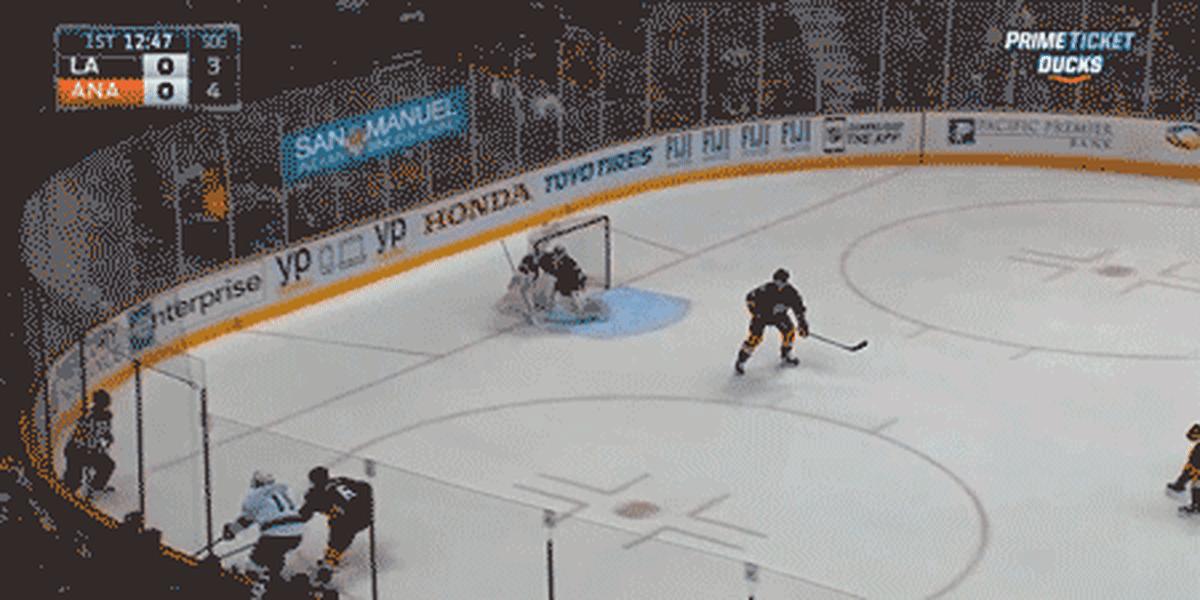Who's better: Ben Lovejoy vs. Simon Despres in SI.com Eye Test

Hockey fans will tolerate the trading of young players by the bushel when they are nameless draft picks. But put a face on the mortgaging of the future and suddenly everyone freaks out. ThePenguins, who traded young defenseman Simon Despres (above, right) at the deadline to the Ducks for veteran blueliner Ben Lovejoy (left), are finding this out now.
I know what you’re thinking: Despres is proven. Unlike the draft picks the Oilers got for Jeff Petry (which they will inevitably squander), Despres has a 100% chance of becoming a player similar to Lovejoy in the short-term, and he also has a decent chance to be better than Lovejoy in the long-term. Despres is 23 with a nice floor; Lovejoy is 31 and has a definite ceiling.
[daily_cut.NHL]
But in eight years, when Despres will turn 31 (and presumably be in his prime), there’s a decent chance that Sidney Crosby—given his injury history and the fact that he will be 35—will have called it a career. Pittsburgh is good now and nobody is that much better. To get Lovejoy, the Penguins paid a hefty price for marginal improvement in a wide-open field of contenders, all of whom are also desperate for marginal improvement. Given that Pittsburgh made a player-for-player trade, every Penguins fan is now trying to figure out just how much better than Despres, if at all, Lovejoy is.
• Source: Despres lost Penguins' trust
As in the Tyler Myers–Zach Bogosian swap, the statistics clarify little. Lovejoy (52.1% FenwickFor) and Despres (51.7%) both boast possession stats better than their teams’, with a slight edge to Lovejoy. Despres has the reputation of carying his partner, Rob Scuderi, which is borne out in with-or-without you (WOWY) statistics: Scuderi’s Corsi rating drops from 50.8% to 45.5% when he has been separated from Despres the last two seasons. By contrast, Lovejoy had been accused of being carried by Cam Fowler this season—something he joked about after the trade (both partners posted worse numbers without the other).
Eye Test: Who's better—Tyler Myers or Zach Bogosian?
The most telling statistics have to do with how each player is used. Lovejoy begins a higher percentage of his shifts in the defensive zone and faces much tougher competition. There exists a tendency to treat these numbers—Zone Starts %, QualComp—as debits and credits against a player’s possession statistics. One player, like Despres, may have good possession stats, but gets knocked for playing soft minutes. Another, like Lovejoy, gets credit for playing against top competition.
Maybe, instead of adjusting evaluations in this crude way, the focus should be more on what each number says about how a coach views a player. Penguins coach Mike Johnston didn’t feel compelled to lift Despres out of third pairing minutes, while Anaheim’s Bruce Boudreau trusted Lovejoy with the game on the line. I think the reasons why are evident in the way both blueliners play, and were spelled out in Pittsburgh’s explanation for the trade: Lovejoy brings the right kind of physicality to the position.
Despres has an impressive number of hits and fights, given his playing time, but his style of physical play has not always seemed especially suited to playing defense. Lovejoy, on the other hand, has always seemd to do a better job picking his spots. After the trade, I tested this theory by watching both players face the punishing offense of the Kings.
Lovejoy matched up against L.A.’s Anze Kopitar–Marian Gaborik line and more than held his own. For a player who has not been held in high regard for much of his career, I was impressed with the then-Duck’s skating ability. He (jersey number 6 in black, below) stayed stride-for-stride with Kopitar (11) on most shifts and used his leverage to slow the attack and win board battles:

I don’t know if Lovejoy was credited with a hit on this play, but what he did here is much more useful than what I often saw Despres doing: hitting players a second after they cycled the puck. That kind of perfunctory contact helps you on the stat sheet and is useful in so far as it puts the fear of God in an opponent, but Despres (47 in white, below) is neither God nor Shea Weber. He’s not even Cal Clutterbuck. Indeed, Despres’s hits seemed mostly pointless:

And when it came time to front a defender, as Lovejoy does to Kopitar in the first GIF, Despres occasionally fell into flat-footed reaching with his stick (below):

Or blatantly violating the “Lidstrom rule” and drawing an interference penalty (below):

Don’t get me wrong. I’m not saying that Despres is a bad player. He handles the puck very well, uses his frame to box out and makes surprisingly good stretch passes through the neutral zone. Anaheim has netted a nice player who has the tools to become a very good one.
And Lovejoy wasn’t without faults. But Lovejoy played a savvy game. He kept the crease clear, fronted players at the blue line and smartly applied physical pressure.
Whether the Penguins practiced sound asset management here is another matter entirely, though teams that buy at the deadline rarely get a good rate of return. But as far as Pittsburgh’s stated reason for making the trade—that Lovejoy adds experience to its defense—I can see it.
